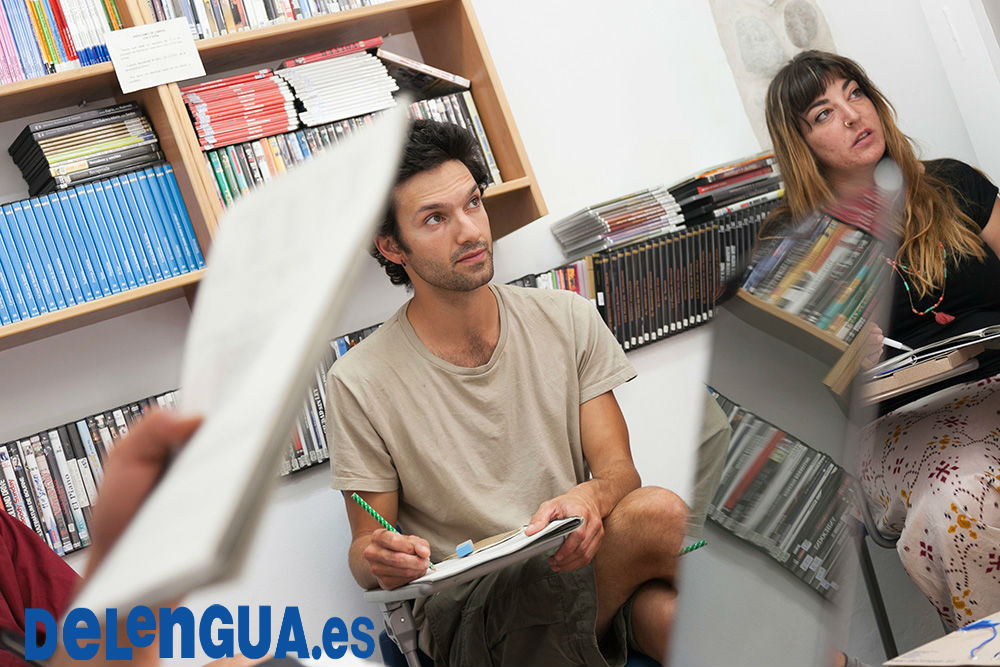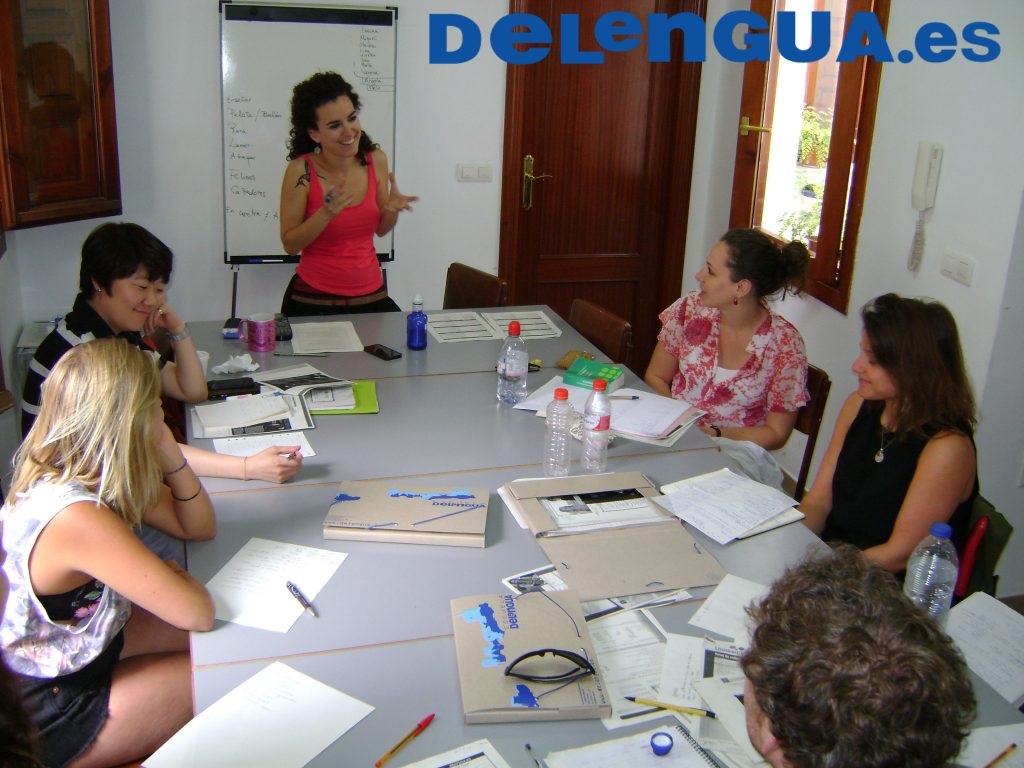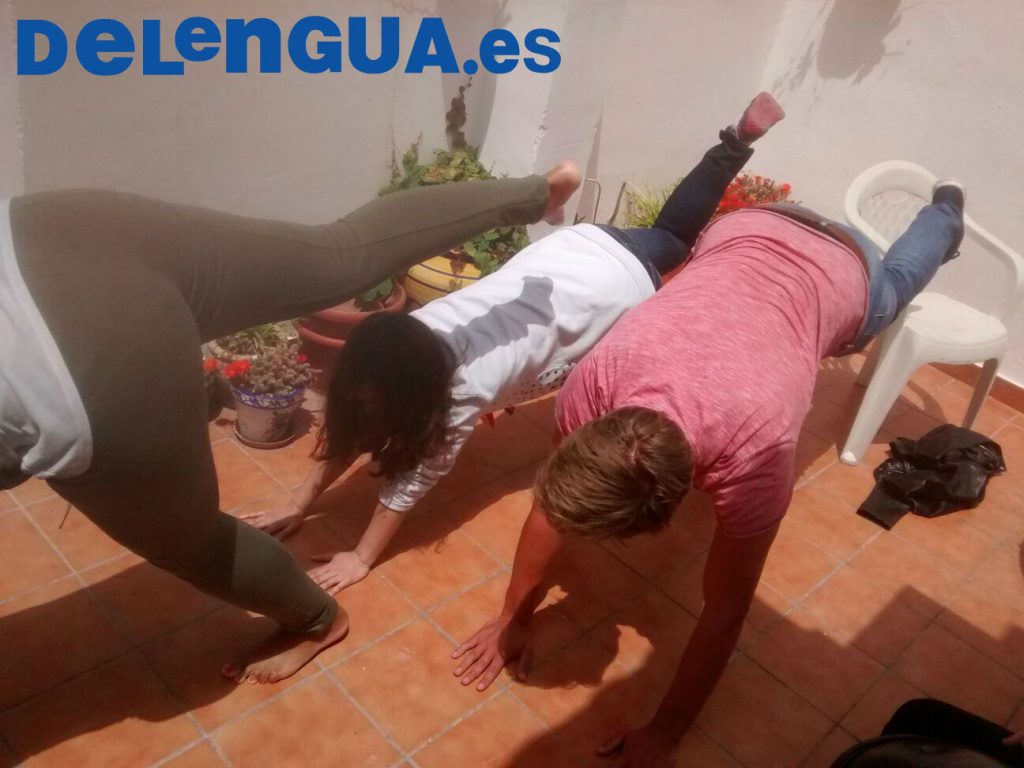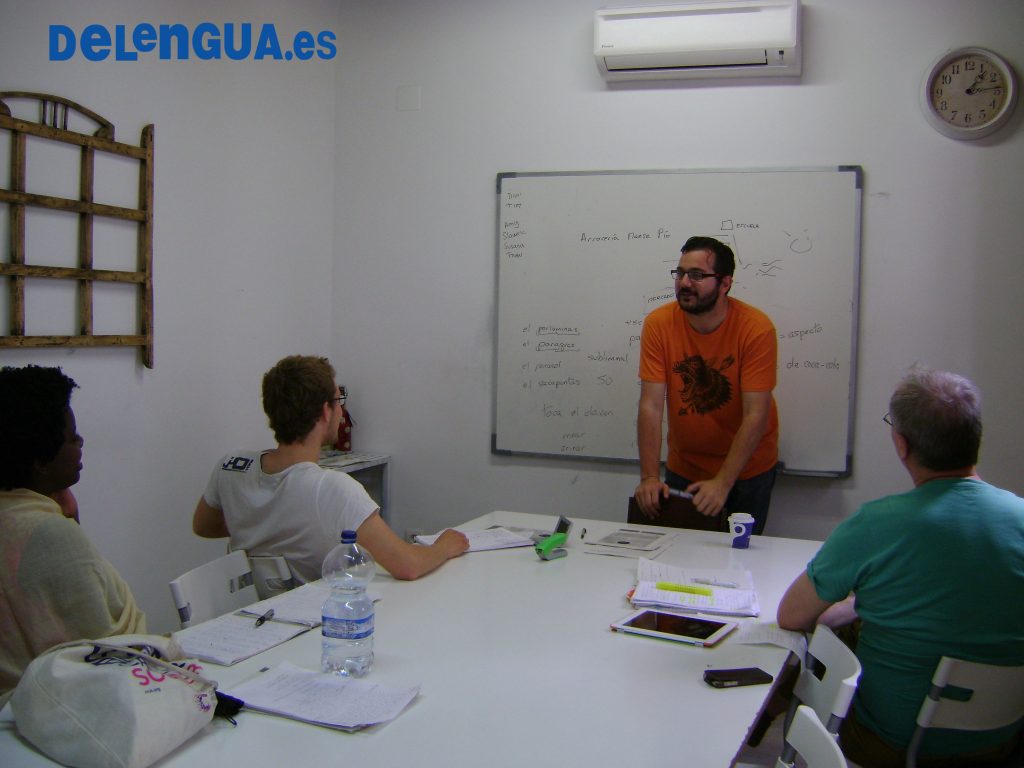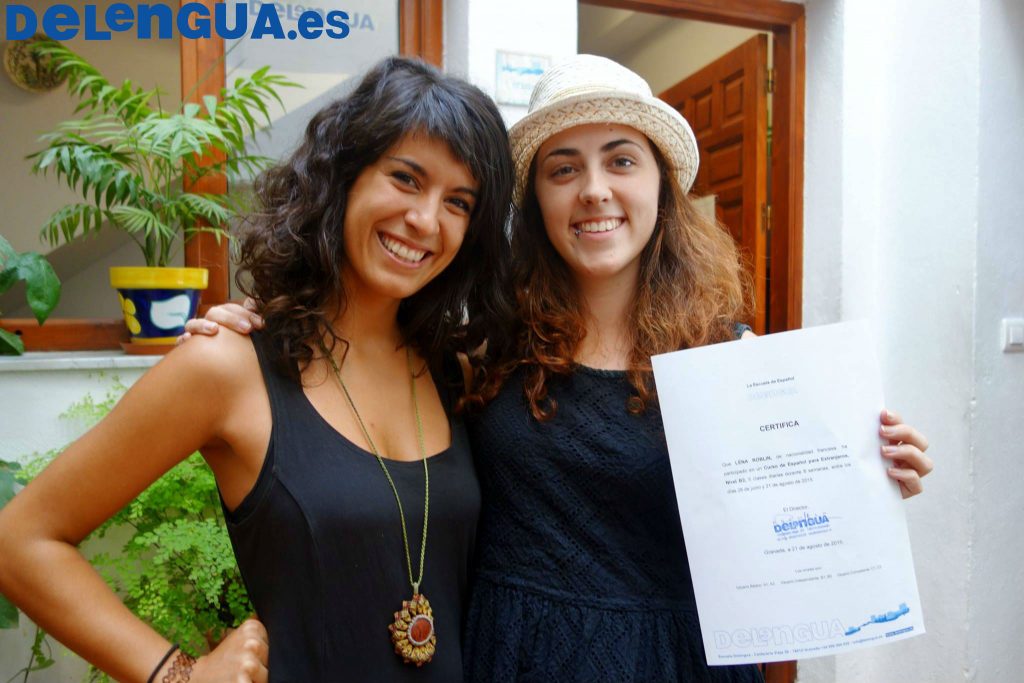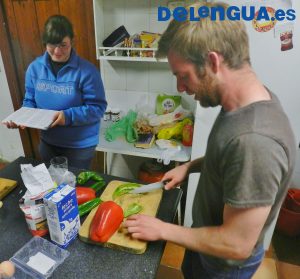
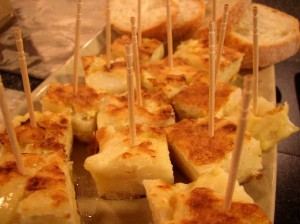

| Español | English | |
|---|---|---|
| Se come en todas las regiones de España. A cualquier hora del día, fría o caliente, por la mañana para desayunar, a media mañana en el bar de la esquina, o de pie a la hora del aperitivo.
*Pero también como entrante o como segundo plato en la comida. *O a media tarde para merendar. *O para cenar. *Y en el campo, cuando vamos de picnic. *Se come sola o con pan. *Es un alimento completo y equilibrado: proteínas, fécula, grasa vegetal… Los ingredientes son baratos y casi siempre los tenemos en casa. Y le gusta a casi todo el mundo En resumen: un plato perfecto ¿Quién soy? Ven a la escuela de español Delengua y podrás aprender a hacerla… es sencillo… Tus amigos te van a envidiar y tener celos ! A veces, en las actividades de la escuela de español, se pueden tomar clases de cocina junto con los profesores y los alumnos. Forma parte del programa de actividades y es un remedio muy útil para aprender más vocabulario, mientras te diviertes… Ahí viene la receta… que es lo que más importa ¿verdad? RECETA de la tortilla del Sacromonte (variante de la receta original, la más típica de Granada) :
Tras limpiar y escaldar los sesos y las criadillas en una cacerola con agua hirviendo, se cortan en cuadraditos y se saltean los trozos de sesos y criadillas en una sartén. A la vez, se cuecen los guisantes y, en abundante aceite, se van friendo las patatas cortadas en rodajas pequeñas. Se saltean los guisantes con el chorizo, el jamón serrano, los sesos y las criadillas. Después se le añaden las patatas. A continuación, se baten los huevos y se mezclan con un poco de tuétano, pimientos morrones y el conjunto rehogado anteriormente. Se cuaja la tortilla a fuego lento, dándole la vuelta con cuidado. Puedes encontrar esta receta aquí, y muchas más, en nuestro apartado dedicado a la cocina española y andaluza en la página de la Escuela Delengua ¡Échale un vistazo! |
Tortilla española |
In each region of Spain you can eat it. All day long, cold or hot, on the very morning for breakfast, at mid-morning in the corner bar, or standing up for the aperitive.
*As a starter o as a second dish for lunch too. *Or during the afternoon as a snack. *Or for dinner too. *And in the countryside, to have picnic *You can eat alone or along with bread *It is a complete and healthy food : proteins, starch, vegetable fat… Very cheap ingredients and you have at home quite always. And everybody likes it ! To put in a nutshell: a perfect dish Who am I? Come to the Delengua Spanish School and learn how to prepare it… Your friends will be very jealous and admirative! Included in the after school activities, cooking classes are sometimes offered. You can cook along with the teachers and your school mates. It is a perfect cultural activity to improve your vocabulary whereas you’re having fun… Here your are the recipe… that is the most important, isn’t it? RECIPE of the Sacromonte’s tortilla (kind of Spanish omelette, typical from Granada) :
After washing and blanching the brains and testicles in a pan of boiling water, cut them into small squares and sauté them. At the same time, cook the peas, and fry the potatoes (cut into thin slices) in a generous amount of oil. Make a Sauté with the peas and the chorizo, the cured ham, the brains and the testicles, and then add the potatoes. Next, beat the eggs and mix with a little bone marrow, sweet red. You have to cook over a low heat the Tortilla, and curdle it with care. You can find this recipe and much more HERE, in our special section dedicated to Spanish and Andalusian cooking in the main website of Escuela Delengua Have a pleasant look! |




